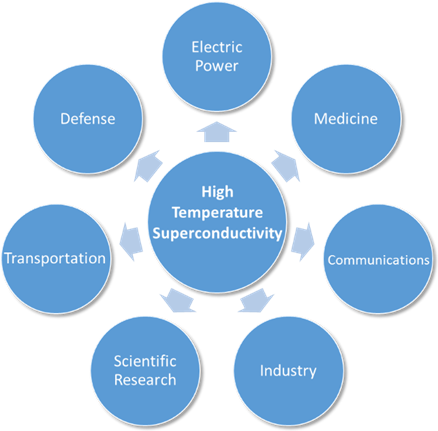Other Applications

There are also many other notable superconductive application areas outside of electric power sector, such as medicine, communications, industry, scientific research, transportation, and defense. Several specific examples of these applications include high-field magnets, magnetic resonance imaging (MRI), nuclear magnetic resonance (NMR), magnetically levitated trains, and ship degaussing systems. These applications—which today are often based on LTS—demonstrate that superconductive technology can be used in a variety of applications in many sectors of the world economy. Successful application of HTS wire in these markets can help promote the entire industry.
High-field Magnets: The United States is especially active in YBCO high-field magnets that generate over 20 to 30 Tesla, which cannot be achieved by conventional magnets or LTS. The National High Magnetic Field Lab (NHMFL) is actively developing an all-superconducting 32 T user magnet project. In Japan, Tohoku University and Toshiba are developing refrigerator cooled high-field (25 T) magnets using YBCO wire.
MRI: MRI machines (0.5 T) made with MgB2 wire have been commercialized because MgB2 has the benefit of relatively low cost with long length wire configurations. However, these machines (0.5 T) have lower field strength than the conventional NbTi MRI (3 T). There is ongoing R&D for MRIs using Bi2223 wire and YBCO wire. For instance, a 3 T MRI was developed using Bi2223 wire and a highly stable power supply, successfully taking an MRI image. METI (Japan) is developing a YBCO based magnet. Toshiba and Mitsubishi are studying the YBCO wire magnet technology for MRI.
NMR: Bi2223 wire was used also for a high field NMR system. The National Institute for Materials Science achieved 23.5 T (1020 MHz) in an NMR. Many researchers are now considering YBCO wire for higher field NMR machines: MIT and RIKEN are studying YBCO wire magnets for NMR.
Accelerators for medical use: JST (Japan) is developing a YBCO magnet for medical treatment (heavy ion irradiation to cure cancer). This high field and compact magnet downsizes the whole system using a beam accelerator.
Maglev trains: JR Railway Technical Research Institute (Japan) is developing YBCO magnets with quasi- persistent mode aiming for future maglev train applications. They achieved a 5 T generation with a medium sized magnet and held a constant magnetic field for a relatively long time.
Ship degaussing systems: AMSC is pursuing a new application for degaussing systems in navy ships. Using superconducting wire instead of copper cables can reduce the weight of the ship.
What's New
- HTS Readiness Map for Industrial Applications
- Annual Report 2022: IEA Technology Collaboration Programme on High-Temperature Superconductivity
- HTS Wire Enabling Market Disruption
- HTS Readiness Map for Energy Delivery Systems, Manuscript published at the Applied Superconductivity Conference 2022
- High Temperature Superconductivity Application Readiness Map for Energy Delivery (July 2021)
- Summary of High Temperature Superconductivity Readiness Map
- Collaboration with TCP Wind
- Energy Efficiency, Resilient Electric Systems, and Transportation Applications Using High-Temperature Superconductivity
- Visualize the World’s HTS Projects
- Collaboration with other IEA TCPs
- Learn how the HTS TCP is fostering the young generation of scientists
- Interested in Membership?
Events
- HTS TCP 18-20 September 2023, Geneva, Switzerland, ExCo Meeting
- IEEE CSC Events Calendar
Historical Newsletters
- HTS Newsletter: Summer 2019
- HTS Newsletter: Fall 2017
- HTS Newsletter: Winter 2017
- HTS Newsletter: Fall 2016
